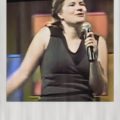Let’s talk for a moment about why I misfiled my tax extension. Melty Jello brain aside, bad software design almost cost my little family $2,500.
Background:
When I’m not wrestling a one-year-old into tiny shoes, I’m a User Experience Designer. This means I work with software companies to create easy-to-understand interfaces.
It also means that when I screw up my tax extension, I look very carefully at the software path that got me there.
Dramatic Reenactment:
It was April. I needed to file an extension. Like most Bay Area tech nerds, I hate mail. I consider it a personal affront if I have to print out a form, write an address, locate stamps, and put a letter in the whatsit…mailbox…thing. Naturally, my first step was to search irs.gov for “file extension online”.
Problem one: Too many results
The IRS site is too damned helpful. There were 948 results for my search. Many results were press release or blog type articles hinting at the existence of online extension filing, but containing no direct links. I wanted to find one or two good matches. Instead, I found a sea of irrelevance.
Problem two: Too many names
I hopped down a bunny trail for about ten minutes, searching for a feature alternately referred to as “E-file an extension”, “Free file”, “Freefile”, “Free Fillable Forms”, “Free File Fillable Forms”, “Free Federal Extension”, “Form 4868”, “Traditional Free File”, and “IRS e-file”.
Problem three: Inconsistent design
I eventually landed on a modern-looking site that seemed likely. I clicked “Get Started” and wandered through four increasingly less-well-designed pages which jumped from site to site, forcing me to read and parse options despite having already told the system what I wanted.
Problem three: Asshole account requirement
The eventual winner was a page called “Free File Fillable Forms” which required me to create an account and update my Flash plugin. I was already logged in to irs.gov, but that didn’t count. I created “a password that is different than my User ID, between 8 and 32 characters, and contains at least 1 number and 1 symbol”. All the eye-rolling gave me a headache.
Problem four: Misleading email
I received a spammy looking ALL CAPS email telling me my account had been created. I filled out the IRS extension form, which was the easiest part of the process. I submitted, and received another spammy ALL CAPS email saying “Your federal return was successfully transmitted”.
At this point, I fell on the bed and whined to my husband for several minutes about information architecture. Then I fell asleep, secure in the certainty that I had filed an automatic extension. Taxes wouldn’t be bothering us for a few more months, by which time we would certainly be getting more sleep.
Months passed. There was no sleep, but we still did our taxes. One day, we received an exciting letter! The 8-32 character password was for naught. We hadn’t filed an extension. We were scofflaw losers who owed the IRS huge penalties.
What happened? Email forensics turned up the unhappy answer. Seven and a half hours after I had filed the form, I quietly received a final ALL CAPS email. It looked the same as the others, and had the same subject line. It filtered right into the folder I use for Crap Communications from Companies.
Our extension had returned “Error Code 0312: Reserved for Electronically Transmitted Documents (ETD)”. At least they provided an acronym in case I needed one.
I hadn’t noticed the email. I didn’t realize the form had been rejected. It was my mistake, but it could have been prevented with a more carefully designed user experience.
Lessons:
A Seattle Post-Intelligencer article called File your taxes free, but read carefully points out that the Free File service is made up of several companies who each have different restrictions on who can file online. This would have been good to know. If my age and/or income didn’t match the criteria, the system should not have let me submit my form.
Back-end form validation isn’t that hard. It is easier to filter out invalid data than to waste the IRS’s time by submitting a flawed document, parsing return error codes, notifying the user, and having the user write critical blog posts about you.
I’m not sure why my extension failed. The error code only tells me what I already know: that I filed electronically, and that the first letters of Electronically Transmitted Documents are ETD. A more specific error system would be nice.
Still, the real reason I feel double-crossed can be attributed to an oversight shared by other, better websites. Nobody thought of email communications as part of the user experience. One person made the website, and another person wrote the emails. Chances are the email person was a clever engineer who made a template and inserted variables instead of crafting separate text for each use case. Entire lines of code were saved. And as a result, every email has the same subject heading. Every email looks like a bit of auto-generated confirmation junk, and nobody actually designed the most crucial communication in the entire experience.











 I’m on a panel called “Funologists live and in person: Guerilla Game Research.”
I’m on a panel called “Funologists live and in person: Guerilla Game Research.”

























 I’m typing with my face today due to a stupidity-induced thumb injury from, I think, painting my basement. Homeowners beware.
I’m typing with my face today due to a stupidity-induced thumb injury from, I think, painting my basement. Homeowners beware.
 Thanks for all of the kind comments on the previous post. They really helped balance the freaking out I had to do when a kind well-meaning soul posted this link as an example of a REALLY GOOD children’s website.
Thanks for all of the kind comments on the previous post. They really helped balance the freaking out I had to do when a kind well-meaning soul posted this link as an example of a REALLY GOOD children’s website.
 I got this in my email today:
I got this in my email today: Humor me and compare it to
Humor me and compare it to 